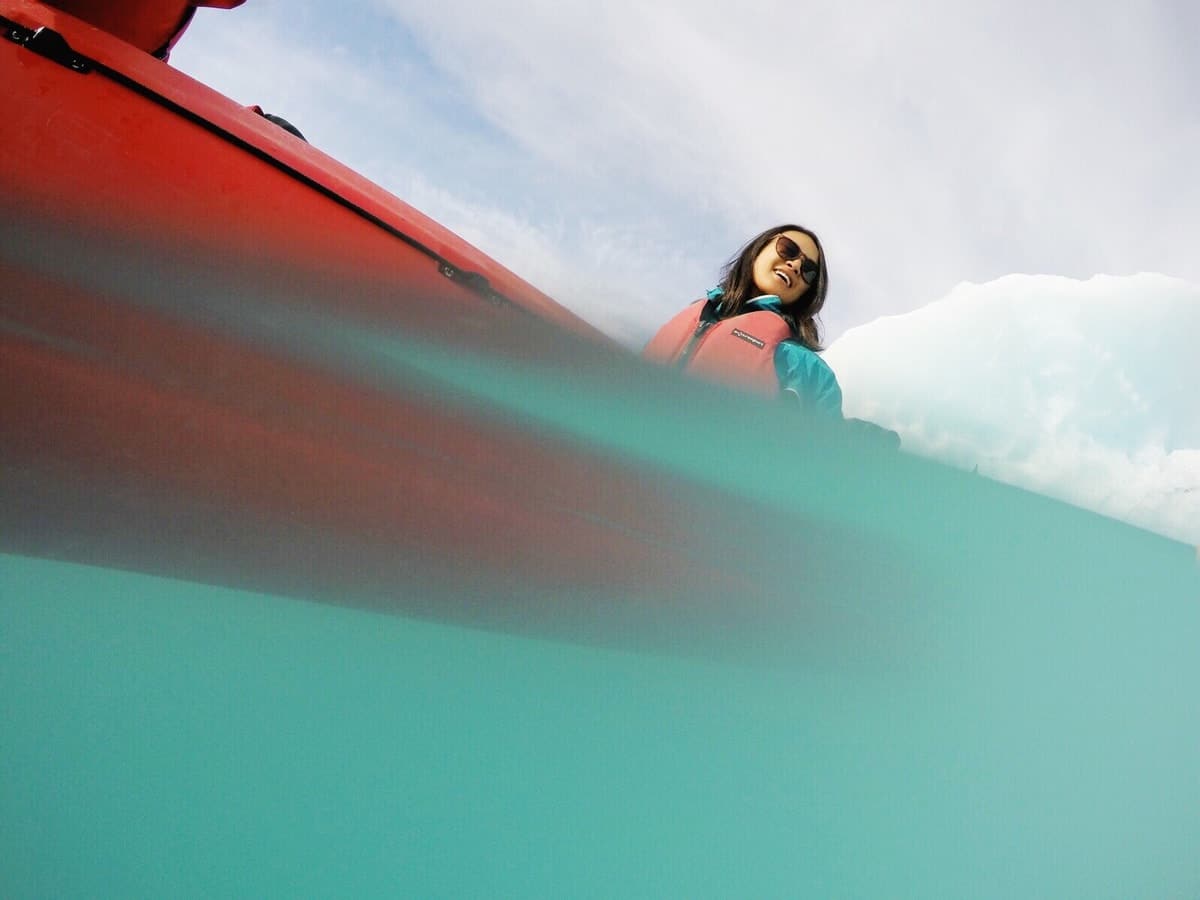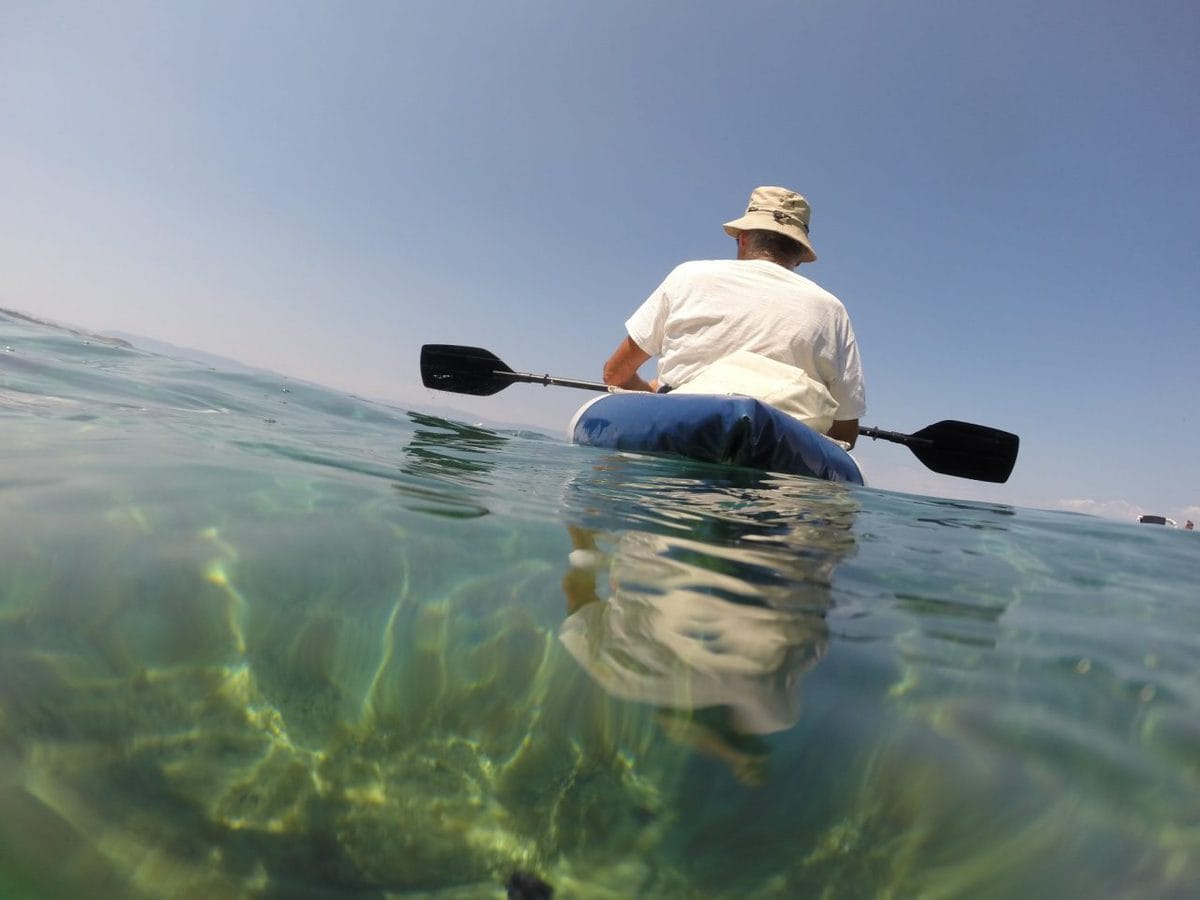What Happens if You Overload a Kayak? (Weight Limits)
So, you are considering purchasing a kayak. Maybe you want to bring a lot of gear with you, but you may already be on the heavier side. Or, maybe yourself and your partner come close to the weight limit on a tandem kayak. What’s the solution?
Kayaking is a healthy activity and is a great start to a more active and healthy lifestyle, so it can be frustrating when a kayak’s weight limit seems so limited.
What’s the solution? You may be wondering just how stringent those weight limits are, and if you can get away with overloading your kayak a little bit.

Table of Contents
- What Happens if You Overload a Kayak? (Kayak Weight Limits)
- Overloaded Kayak Performance
- What Load Capacity to Look for When Buying a Kayak
- Final Word on Weight Capacities for Kayaks
- Our Top Picks for Maximum Capacity Kayaks
What Happens if You Overload a Kayak? (Kayak Weight Limits)
What happens if you overload a kayak? When you overload a kayak, you will make the kayak sink lower into the water than is recommended. While this won’t automatically sink your kayak, it will make it less stable and increase the risk of capsizing and harming yourself, your kayak, your gear, and potentially other people.
If you want to learn more about why you should not overload your kayak, what parameters to use when looking at weight limits when purchasing a kayak, and the type of kayak with the highest kayak weight capacities, keep on reading. We will give you all the information you need to make a sound choice.
Overloaded Kayak Performance
When you exceed the weight limit on a kayak, quite a few things begin to happen. First, you will find that the cockpit begins loading up with water. While this alone won’t sink the kayak, it is adding even more weight to it, so it will begin to sink even further.
This greatly decreases the safety of the kayak. Even if you only exceed the weight limit by a small amount, sitting lower in the water makes you much more susceptible to waves and wind.
And, as we discussed, if you’re sitting lower, more water will enter the kayak, exceeding your weight limit further and sinking the kayak more.
This is not the situation that you want to be in.
Even if you aren’t becoming water-logged, exceeding the weight in your kayak and sinking lower into the water will throw off the stability. You could easily capsize your vessel simply by paddling if you are exceeding the maximum weight capacity.
Furthermore, poorly distributed weight can have similar effects at the bow and stern of your kayak. Even if you aren’t exceeding the total weight limit of your kayak, it is important that you distribute the weight as evenly as possible between bow and stern.
Understanding Kayak Stability
There are two types of stability you should be concerned with when it comes to kayaking. These two types are called primary stability and secondary stability.
Primary stability is how you feel when you are sitting still and centered in the kayak.
Secondary stability is how the kayak feels when you are leaning or moving around the kayak to the stern or the bow.
Overloading and mismanaged weight distribution will affect both primary and secondary stability. However, just because your primary stability is still sound, it doesn’t mean that your secondary stability isn’t compromised and putting you in danger.
What Load Capacity to Look for When Buying a Kayak
When you are shopping for a new recreational kayak, you should aim to hit about 70% of the load capacity for that Kayak.
For Example, if you are:
- 200 pounds
- Carrying 100 pounds extra weight of gear and supplies
- Planning on catching 50 pounds of fish.
You would need a kayak that has a load capacity of more than 350 pounds. However, instead of looking for a kayak with that load capacity, you should be looking for one with a load capacity of 500 pounds, as 350 pounds is 70% of 500, leaving room for the weight of your gear and your catch.
When you do it this way, you are giving yourself plenty of wiggle room if you do need to carry more weight for any reason, and you will be at peak performance in your kayak in the usual, ideal scenario.

Final Word on Weight Capacities for Kayaks
Now that we’ve illustrated what will happen if you overload your kayak, as well as how to look for the proper weight capacity for you, it is important to state that you can never have too much weight capacity.
The only reason to not get a higher load capacity for your kayak is cost. The higher-end more-expensive kayaks will have a greater weight capacity, and we understand that you shouldn’t have to drop thousands of dollars simply to enjoy the great outdoors.
That being said, paddlers should go with the highest weight capacity that your budget can afford. When it comes to the performance of your kayak, there’s simply no reason not to.
Additionally, it is important to remember that not all weight is equal when it comes to your kayak.
Filling up the weight capacity with one very large man right in the middle of the kayak is going to hinder the maneuverability and performance of that kayak much more severely than the same weight of gear that is evenly disbursed throughout the kayak.
As we mentioned earlier, the primary and secondary stabilities of the kayak are very important to its performance.
It’s also important for paddlers to consider other factors like: practical weight limit vs. maximum weight limit, width, buoyancy, displacement, and maneuverability when finding the right size kayak whether you are a large person or not.
Our Top Picks for Maximum Capacity Kayaks
Now that you have done the calculations for what weight capacity you need, here are our top choices of kayaks that have great capacity. Hopefully one of them fits your needs and budget.
They are all great options to get you started, and we have included a variety of types to cover different intended uses.
Sea Eagle 370 Pro Inflatable Kayak
This kayak is very lightweight and can hold up to three people, making it the perfect addition to your camping and outdoor adventure gear. Better yet: it has a load capacity of 650 lbs.
This kayak is easy to transport and can be set up in less than 10 minutes, so it is perfect for beginners or impatient types. It is also super-stable, making it great for those that don’t quite have their sea-legs yet. It gets its extra stability from an I-beam construction.
The front and rear seats on this kayak can be removed, so while its great to take out with the kids, you can also remove the seats and load it up with gear for a long solo trip.
And, even if you do take on some water, this kayak has a self-bailing drain valve, which will help you stay afloat as well as nice and dry even if the conditions call for some high seas.
Important Specs:
- Weight: 32 pounds
- Length: 12 feet, 6 inches
- Load Capacity: 650 pounds
- Person Capacity: 3
Sun Dolphin Boss
This manufacturer specifically designed this fishing kayak with anglers in mind, so it is a great choice for the fishermen out there. This kayak is a sit-on-top kayak, which is a bit different than what some people are used to.
However, it has a 500-pound weight capacity, making it a great option for those who need to carry a lot of gear to their favorite fishing spot and who plan on carrying a lot of fish back home to the dinner table.
This Kayak is made of UV-stabilized high-density polyethylene which makes it strong and durable. You won’t have to worry when you have brush-ups with rocks and tree limbs.
There are even waterproof hatches at the bow and stern, a feature not many kayaks have, that will allow you to keep tech and gear nice and dry while you search for the perfect fish.
Important Specs:
- Weight: 78 pounds
- Length: 12 feet, 6 inches
- Load Capacity: 500 pounds
- Person Capacity: 1
Driftsun Teton
The Driftsun Teton is the perfect kayak if you are looking for a touring kayak to explore the great outdoors with your partner. It is a very high-quality product, so it will continue to bring you years of joy experiencing all that nature has to offer.
This kayak is also made from UV-stabilized high-density polyethylene, as was the last one on our list, so you know you are getting a high-quality product from jump. This kayak has a weight capacity of 500 pounds, so it can easily accommodate two grown adults.
The Driftsun Teton comes with a lot of nifty features such as flush mount rod holders, paddle parks and rests, and mounting points. You will be able to enjoy all sorts of activities in this wonderful model.
Even the little things are thought of in the Driftsun Teton, such as built-in cupholders and self-bailing scupper plugs. It even has a rear storage unit with bungee cords to keep your gear in place and two watertight storage hatches to keep your tech nice and dry.
An added bonus: you can fit a child in addition to the two adults in this kayak if you need to. While that may keep you from making a longer outing as you will not be able to carry as much gear, this is an amazing starter kayak for a new family.
Important Specs:
- Weight: 72 pounds
- Length: 12 feet
- Load Capacity: 500 pounds
- Person Capacity: 2 adults, one child



